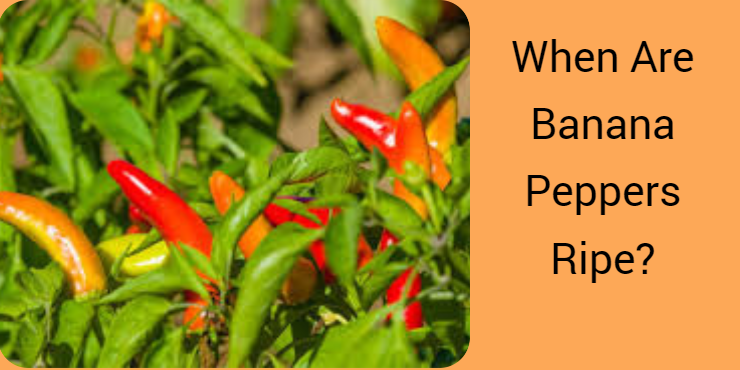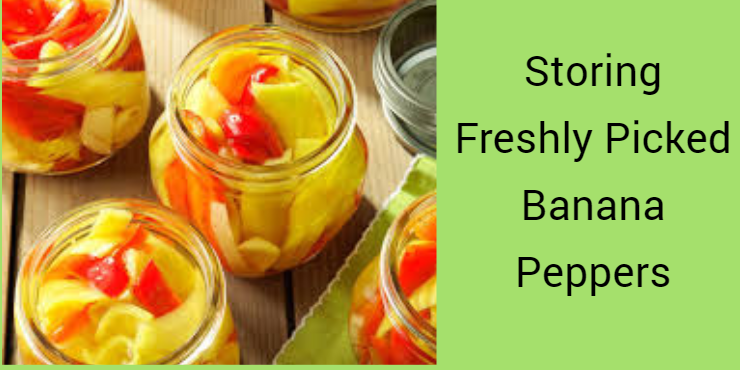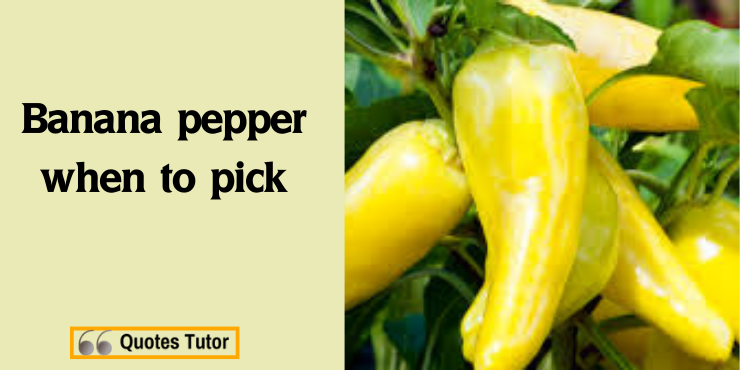Banana peppers when to pick are a popular and versatile vegetable that adds a mild, tangy flavor to a variety of dishes. Whether you’re growing them in your garden or picking them out at the grocery store, knowing when to harvest these peppers is essential to enjoy their optimal taste and texture. In this article, we’ll explore the best practices for picking banana peppers at the right time to ensure the most delicious results for your culinary creations.
Table of Contents
- Introduction
- Understanding Banana Pepper
- When Are Banana Pepper Ripe?
- 3.1 Early Stage
- 3.2 Mid-Stage
- 3.3 Full Maturity
- Visual Indicators of Ripeness
- 4.1 Color
- 4.2 Size
- 4.3 Firmness
- The Twist Test: Checking for Readiness
- Harvesting Banana Pepper
- 6.1 Tools You’ll Need
- 6.2 Harvesting Process
- Storing Freshly Picked Banana Pepper
- Enjoying Banana Pepper
- FAQs
- 9.1 Can you eat banana pepper when they are green?
- 9.2 How long do banana pepper take to ripen after planting?
- 9.3 Can you leave banana pepper on the plant for too long?
- 9.4 What dishes work best with banana pepper?
- 9.5 How spicy are banana pepper?
Understanding Banana Peppers
Banana pepper, characterized by their elongated shape and vibrant yellow color when ripe, belong to the chili pepper family. They are known for their mild heat and slightly sweet taste, making them a favorite for salads, sandwiches, pickling, and more.
The chilies look like bananas , they are yellow in color, solder less and sweet. They are used in various dishes and are called mum chilies.
When Are Banana Peppers Ripe?

Early Stage
In the early stages of growth, Banana peppers when to pick are typically green and underdeveloped. While they are edible at this point, they lack the full flavor and sweetness that comes with maturity.
Knowing when to eat these peppers is easy, according to pepper gig as these peppers are light yellow in color and six inches fifteen cm long, it is the right time to eat them. And these are after seventy days of catching pepper on the tree.
Mid-Stage
As the peppers continue to grow, they transition from green to a paler yellow or light green color. At this stage, they are technically ripe, but they might still lack the desired taste profile.
The true flavor of these peppers can be found 70 days after the pepper is picked from the plant. when the pepper is fully ripe.
Full Maturity
The optimal time to pick banana pepper is when they reach their full maturity. This is indicated by their bright yellow color and plump, firm texture. The peppers will be sweeter and more flavorful at this point.
According to peppers gig traditional, the true flavor of chilies in obtained when the color of the chilies is light yellow to dark red.
Visual Indicators of Ripeness
Color
The color of the banana pepper is one of the most reliable indicators of its ripeness. Look for a vibrant, consistent yellow color across the pepper’s surface.
As these chilies are first dark green then light white then this yellow, yellow too will be dark red, then it can be understood that the chili food is suitable.
Size
Mature banana pepper are usually around 6 to 8 inches in length. If these peppers are left on the tree for a long day they will turn from yellow to red. then it is time to eat and the taste will be very good.
Firmness
Gently squeeze the pepper. Check if the pepper has softened or has any spots, notice that the pepper is soft and has red spot on it, you will be understand then it is time to pick the pepper from the tree.
The Twist Test: Checking for Readiness
An easy way to determine if a banana pepper is ready for picking is by using the twist test. Hold the pepper gently and give it a gentle twist. If it comes off the plant easily, it’s ready to be harvested. And also notice if the color of the chili has turned red.
Harvesting Banana Peppers
Tools You’ll Need
- Garden shears or scissors
- Gloves (optional but recommended)
Harvesting Process
- Put on gloves to protect your hands from any potential irritation from the pepper’s oils.
- Hold the pepper with one hand and use garden shears or scissors to cut the stem about half an inch above the pepper.
- Avoid pulling the pepper, as this could damage the plant.
Storing Freshly Picked Banana Peppers

Place freshly picked banana pepper in a plastic bag and store them in the refrigerator. They can stay fresh for up to two weeks. If you have an excess of peppers, consider pickling or freezing them to prolong their shelf life. Or consider selling.
Enjoying Banana Pepper
Banana pepper can be enjoyed in a variety of ways. Add them to salads, sandwiches, and pizzas for a burst of flavor. You can also pickle them to create a tangy condiment that pairs well with various dishes. bananas pepper add a lot of flavor to fry eggs and make noodles even better.
Final Thought
Banana peppers when to pick are important for ensuring the best taste, texture, and overall quality of the pepper. By monitoring the color and size of the pepper, as well as considering personal preference, one can determine the optimal time to harvest. Whether using them fresh or preserving them for later use, picking banana pepper at the right stage of ripeness will result in a delicious addition to various dishes and recipes.
FAQs
Can you eat banana peppers when they are green?
Yes, green banana pepper are edible, but they will have a milder taste compared to fully ripened ones.
How long do banana peppers take to ripen after planting?
On average, banana pepper take about 60 to 75 days to reach full maturity after transplanting.
Can you leave banana peppers on the plant for too long?
Leaving banana pepper on the plant for an extended period can cause them to become overripe, leading to changes in taste and texture.
What dishes work best with banana peppers?
Banana pepper can enhance the flavor of salads, sandwiches, tacos, and various Mediterranean dishes.
How spicy are banana peppers?
Banana pepper are considered to be mildly spicy, typically ranging from 0 to 500 Scoville heat units, which is relatively low compared to other chili peppers.
